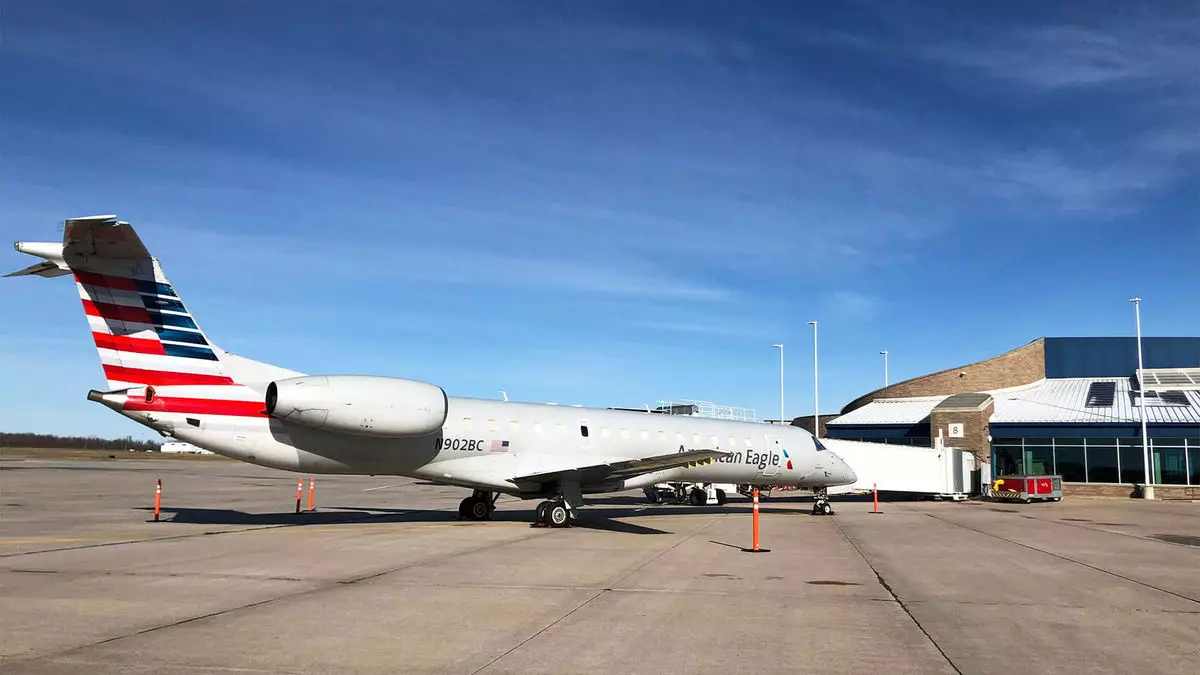The pandemic inflicted significant disruptions on many facets of daily life, with the airline industry facing some of the most severe repercussions. Small airports across the United States, including Appleton Airport in northeast Wisconsin, witnessed a dramatic reduction in service. With airlines like American, Delta, and United grounding regional aircraft due to an acute pilot shortage, travelers in smaller communities were left with few options. However, as air travel begins to stabilize, Appleton has been making strides in recovering lost service and expanding its reach.
In June 2023, Appleton Airport launched its inaugural service to Dallas-Fort Worth with an American Eagle-branded regional jet. This marked a turning point for the airport, now featuring two recently added routes from American Airlines, alongside a revival of service to Charlotte. With United and Delta also increasing regional flight frequencies, the airport is demonstrating a resurgence in connectivity. Data from Cirium reveals that, while overall flights from the major carriers saw a 31% reduction between October 2021 and October 2023, Appleton’s flight count has remarkably soared to 92% of pre-pandemic levels, an impressive feat for a small airport.
Furthermore, the deployment of larger regional aircraft has ushered in a rise in available seats that has surpassed pre-pandemic offerings, increasing by nearly 6%. Such growth translates into tangible benefits for Appleton’s populace of approximately 250,000 residents, providing easier and faster access for both business and leisure travelers. Jesse Funk, the airport’s air service and business development manager, notes the positive impact on local business dynamics and leisure travel, emphasizing that „more competition keeps prices down.“
Appleton’s revitalization is part of a broader national trend. Many small and medium-sized airports have been witnessing a rebound in air service, particularly as regional airlines catch up on pilot recruitment. Data points highlight a noteworthy recovery trajectory: American Airlines has increased regional flights by 14.9% compared to last year, followed by United and Delta with 13.9% and 9.8% respectively. This resurgence is critical for smaller communities lacking diversified air service options, like Appleton, which primarily relies on just one additional carrier—Allegiant.
The pilot shortage, which deepened since mid-2021, has stretched capacity in regional airlines significantly. During this time, airlines, including Delta, were unable to utilize their regional fleets to their full capacities. However, current hiring trends indicate an encouraging reversal of this shortage. „By next summer,“ remarked Glen Hauenstein, Delta’s president, during a recent earnings call, „we think that we’ll be back to 100% of the capacity we had available in 2019.“ United Airlines has also stepped up its regional flight plans, further indicating a broader industry recovery.
Despite Appleton’s positive trajectory and the promising growth of regional services, challenges loom on the horizon. As airlines like Delta and United shift more operations to mainline aircraft to enhance profitability, the reliance on regional jets may become comparatively dwindling. According to Scott Kirby, United’s CEO, regional jets will continue to be part of the airline infrastructure but will represent a shrinking segment of their overall operations.
The Regional Airline Association’s annual report underscores the complexity of this situation, revealing a net decline in service at smaller airports despite growth at moderately larger regional ones. They also warn that pilot shortages could resurface as demand for mainline aircraft surges and deliveries normalize. Similarly, nearly 65% of U.S. airports still face diminished service compared to pre-pandemic levels.
While Appleton Airport has shown impressive resilience and a commitment to expanding its air service offerings, the complexities of the airline industry’s post-pandemic recovery cannot be ignored. As Appleton rejoices in newfound routes, fostering better connections for its residents, it also looks toward a future that demands adaptability, innovation, and ongoing efforts to secure more flight options. Functioning as a critical transport hub for its community, the airport remains optimistic in its pursuit of further service enhancements while navigating the unpredictable waters of the evolving airline landscape. „We’re happy but still looking for more,“ Jesse Funk asserts, echoing the sentiments of many small airports striving for growth in a rapidly changing environment.


Napsat komentář